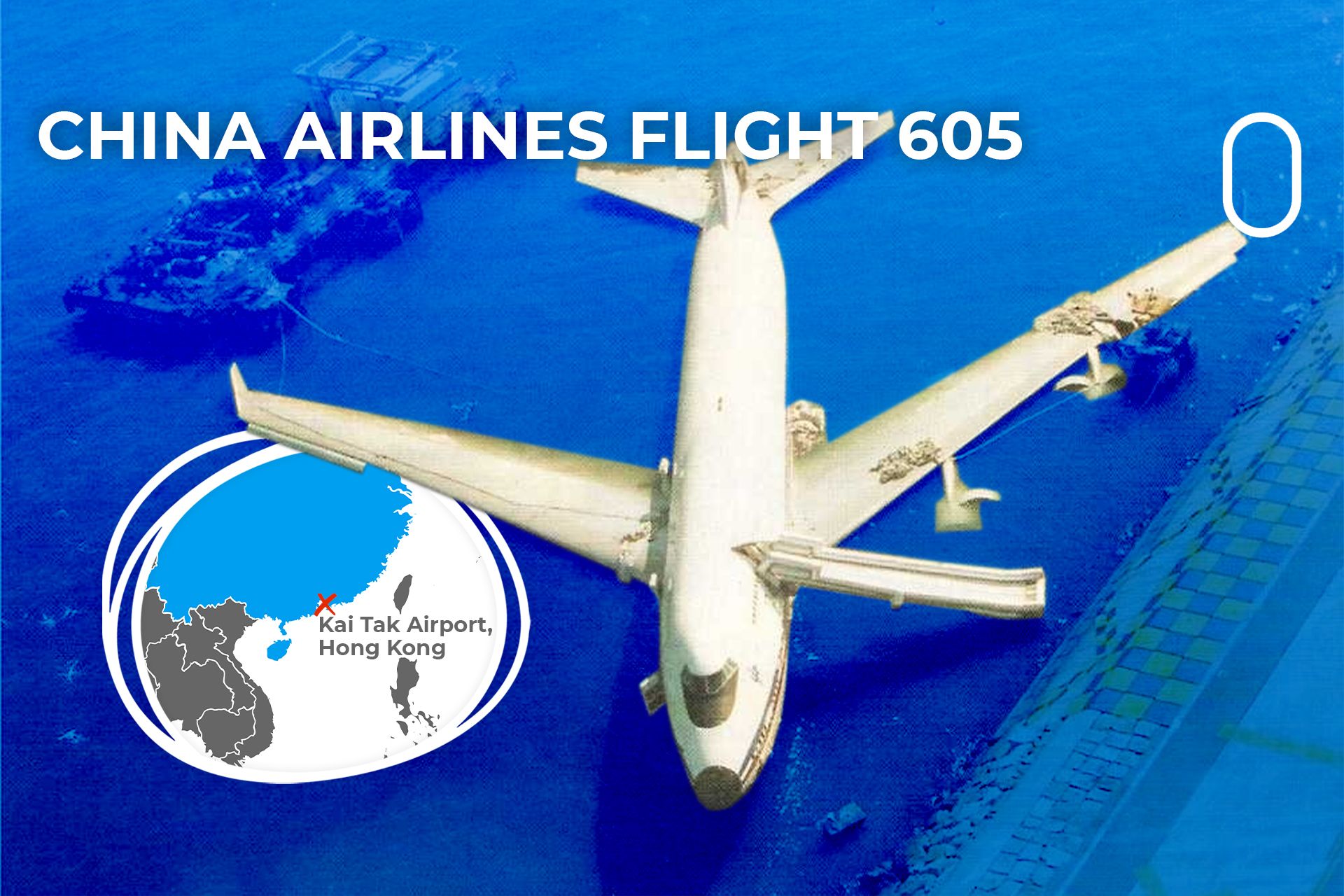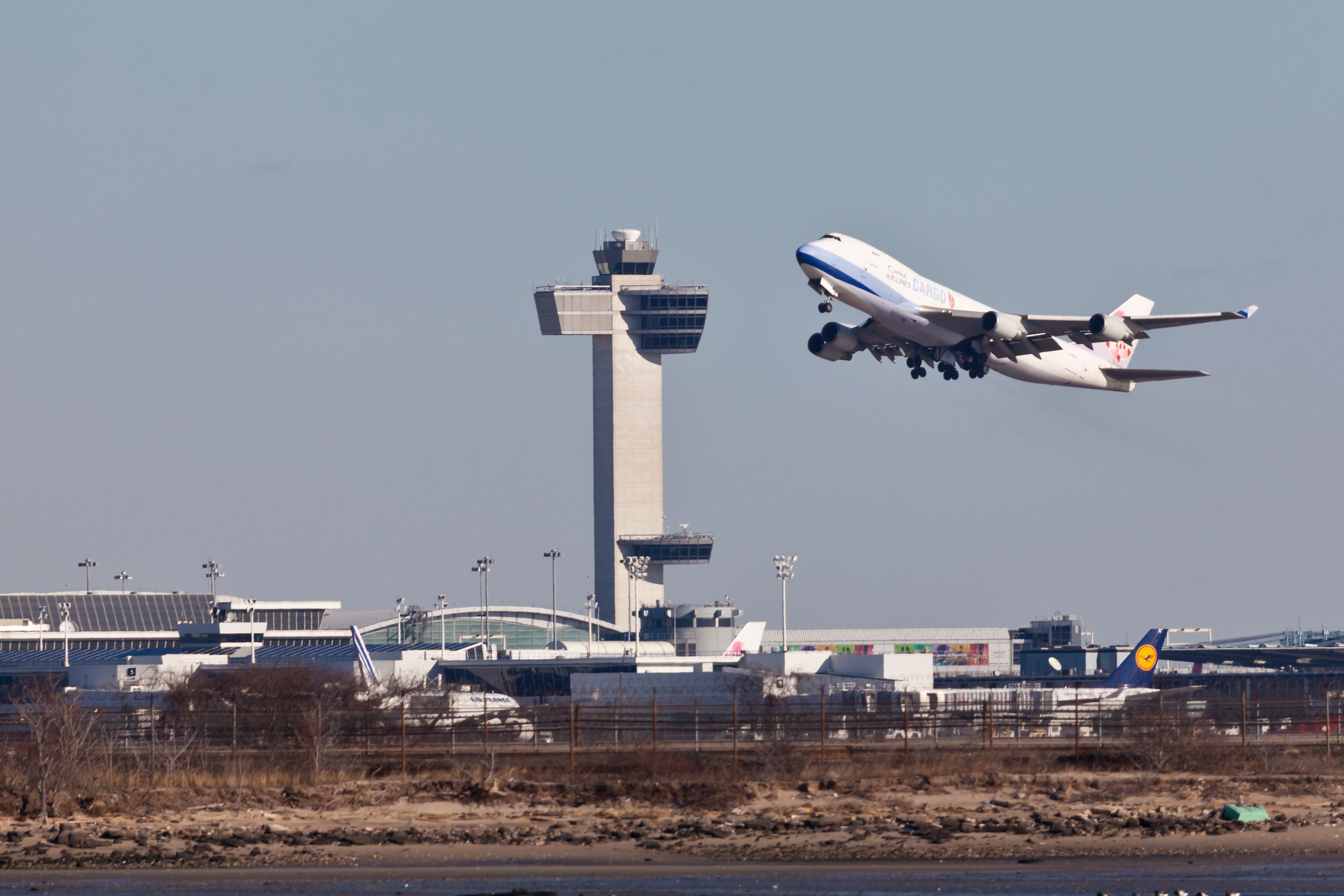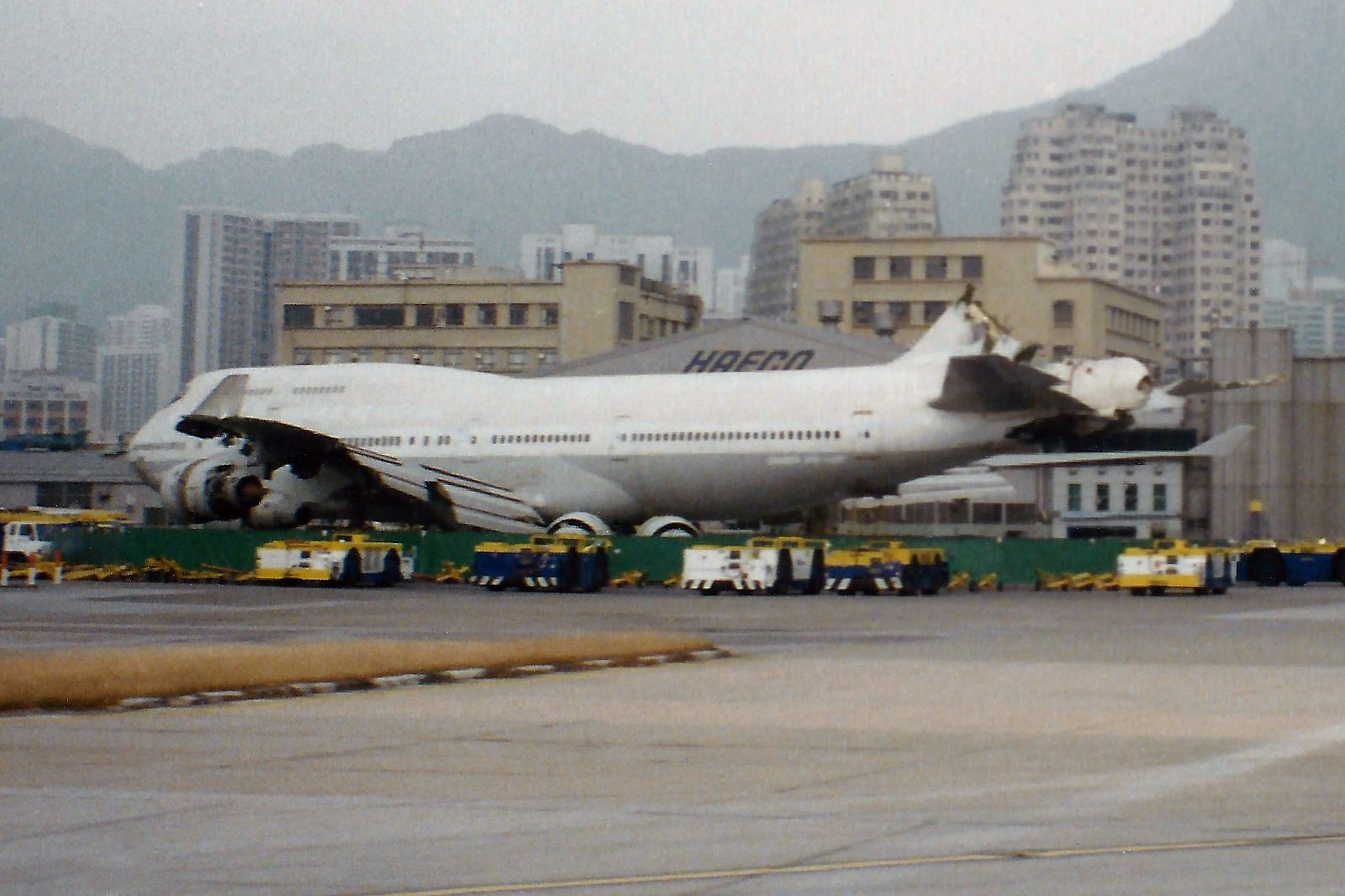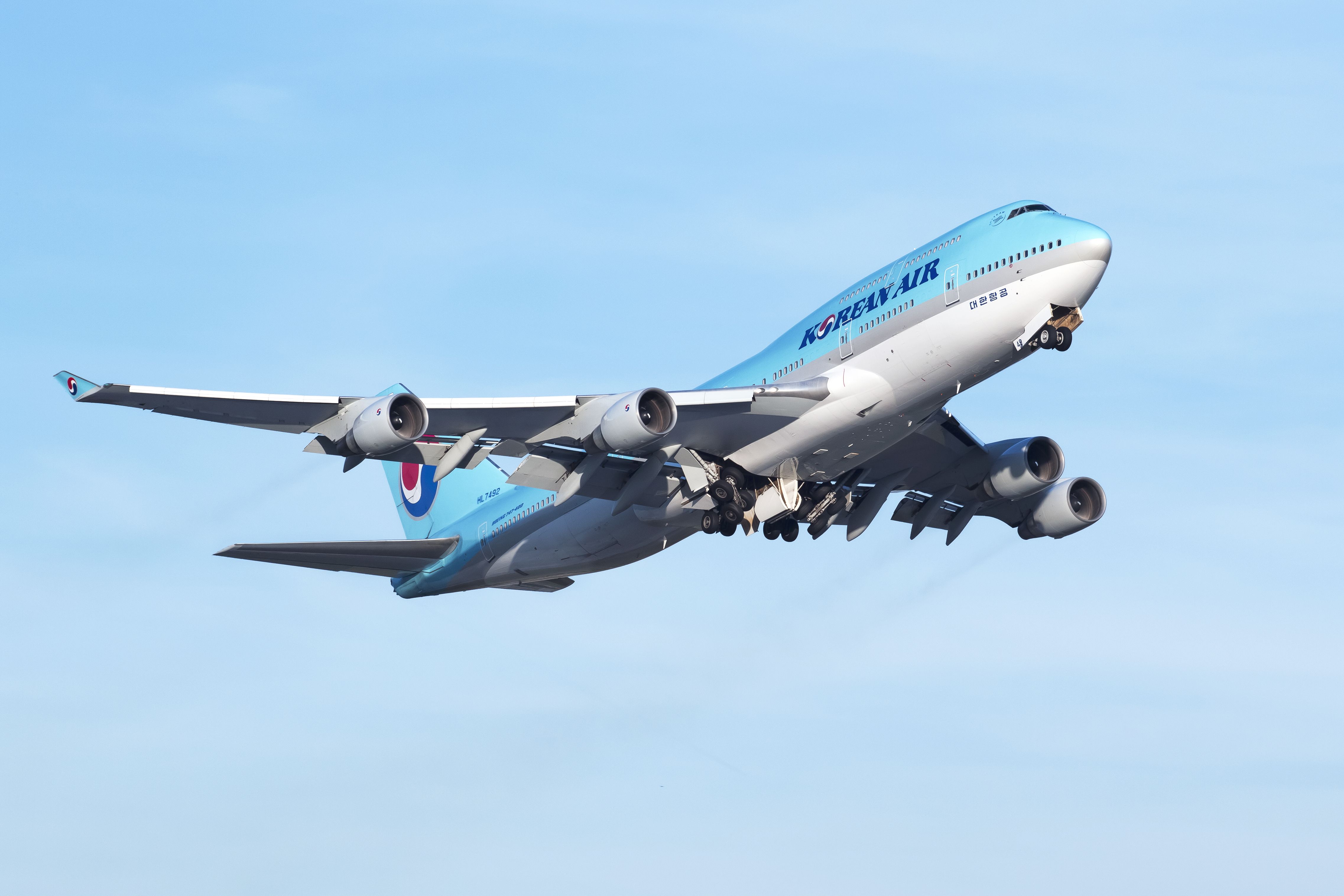Summary
- China Airlines Flight 605 was a Boeing 747-400 crashed into Victoria Harbor during a Hong Kong landing.
- All 396 occupants survived the ditching with 23 minor injuries; the jumbo jet suffered a total hull loss.
- Due to pilot error deviating from the procedure and lack of training, China Airlines was held accountable.
China Airlines has historically been one of the largest operators of the Boeing 747-400. Unsurprisingly, the airline used its fleet on both short-hops and long-haul flights. On November 4th, 1993, China Airlines Flight 605 was carrying 374 passengers and 22 crew members on a 75-minute flight from then Taipei Chiang Kai-shek International Airport (TPE, now Taoyuan International) to Hong Kong Kai Tak Airport (HKG), using a brand-new Boeing 747-400. The aircraft (B-165) was built in June of that year and had only accumulated 1,960 flight hours.
The cockpit crew consisted of two pilots: a captain with nearly 12,500 flight hours under his belt and a first officer with just over 5,700 flight hours logged. Due to a heavy storm on approach, the aircraft steered off at the end of the runway before ditching into Victoria Harbor. All passengers and crew were safely evacuated, with 23 people facing minor injuries. This is the first hull loss of this version of the ‘Queen of the Skies.’
Photo: Soos Jozsef I Shutterstock.
Unfolding of events
|
Date |
November 4, 1993 |
|---|---|
|
Aircraft type |
Boeing 747-409 |
|
Operator |
China Airlines |
|
IATA flight No. |
CI605 |
|
ICAO flight No. |
CAL605 |
|
Call sign |
DYNASTY 605 |
|
Registration |
B-165 |
|
Flight Origin |
Chiang Kai-shek International Airport, Taipei, Taiwan |
|
Destination |
Kai Tak Airport, Hong Kong, China |
China Airlines flew a scheduled daily service between Taipei (TPE) and HKG using a Boeing 747-400 aircraft. A 747-400 jumbo jet is a widebody aircraft with a typical capacity of 416 passengers in a three-class configuration and a range of 7,500 NM (14,000 km). According to data from ATDB.aero, China Airlines had a fleet of 24 Boeing 747-400s for commercial passenger service; all have now retired from this service. The company still operates 13 Boeing 747-400s for freighter flights.
In 1993, Tropical Storm Ira surrounded the Hong Kong airport with heavy rain and strong winds. As Flight 605 approached HKG, 25-knot (29 mph, 46 kph) crosswinds were recorded at the runway. A few miles out, the pilots received multiple cockpit warnings about fluctuating wind shear and glide-slope deviations.
At about 1,500 ft (152 m), the pilots noticed a discrepancy in the true airspeed indicated by the cockpit monitor. As a result, the captain disconnected the autopilot and the auto-throttle and decided to manually control the heading and speed along the remaining flight path.
Moreover, as part of the landing checklist, the pilots armed the spoilers and positioned the auto-brakes to level “2”. Despite severe crosswinds, the captain managed to land the airplane on runway 13. Shortly after touchdown, the first officer took over the controls to keep the drifting plane on the centerline.
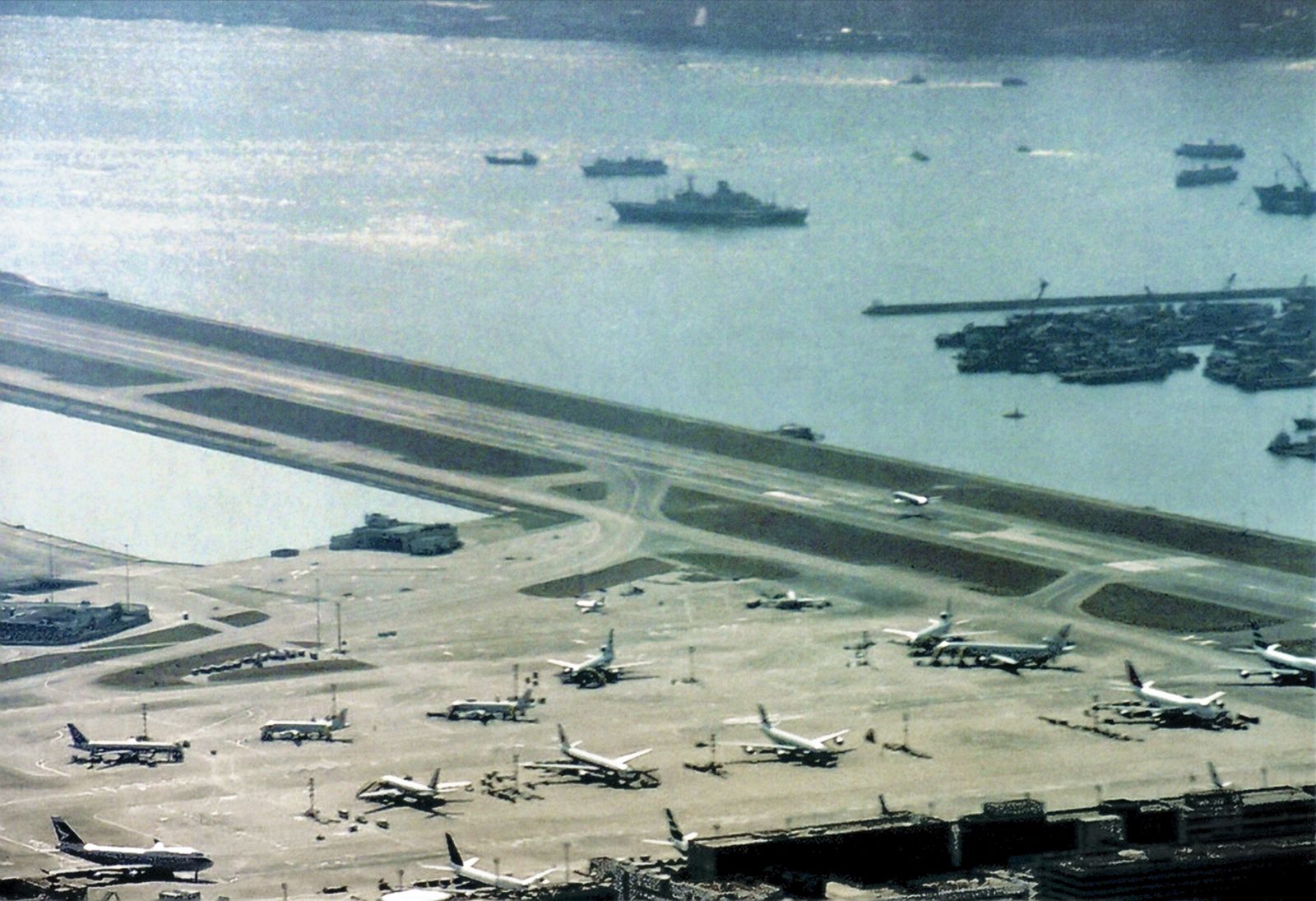
Related
Why Did Hong Kong’s Kai Tak Airport Have To Close?
This month in 1998, the lights were shut off for good at the old Hong Kong International Airport.
Meanwhile, the captain intended to activate the thrust reversers but inadvertently increased the throttle. As a result, the auto-brakes got turned off, and the speed brakes retracted, allowing the airplane to “float” down the runway. The first officer noticed the lack of thrust reversers and immediately deployed the reverse thrust and arm the speed brakes.
Photo: Eliyahu Yosef Parypa | Shutterstock
As the end of the runway was in sight, both pilots realized that the remaining distance was insufficient for a safe stop. To prevent a potential collision with the Approach Lighting System (ALS) of runway 31 (in the reciprocal direction), both pilots steered the aircraft towards the left, ditching the jumbo-jet into Victoria Harbor.
The aftermath
|
Occupants |
396 |
|
Passengers |
374 |
|
Crew |
22 |
|
Fatalities |
0 |
|
Injuries |
23 |
|
Survivors |
396 |
The airplane came to a complete stop in shallow water, in the direction nearly opposite runway 13. The emergency responders (already on standby) approached the scene as the passengers evacuated through the emergency slides. All passengers and crew survived the crash, with 23 people incurring minor injuries.
However, the jumbo jet suffered significant damage and was declared a total hull loss. The vertical stabilizer was found to have interfered with the Instrument Landing System (ILS) of runway 31 and was blown off with explosives shortly after the area was cleared.
The investigators found the captain’s deviation from initiating a missed approach procedure under given circumstances to be the primary cause of the crash. The first officer was found to lack the required training and experience on the Boeing 747. The investigation report also held China Airlines responsible for not having a formal crosswind landing procedure in their flight manuals.
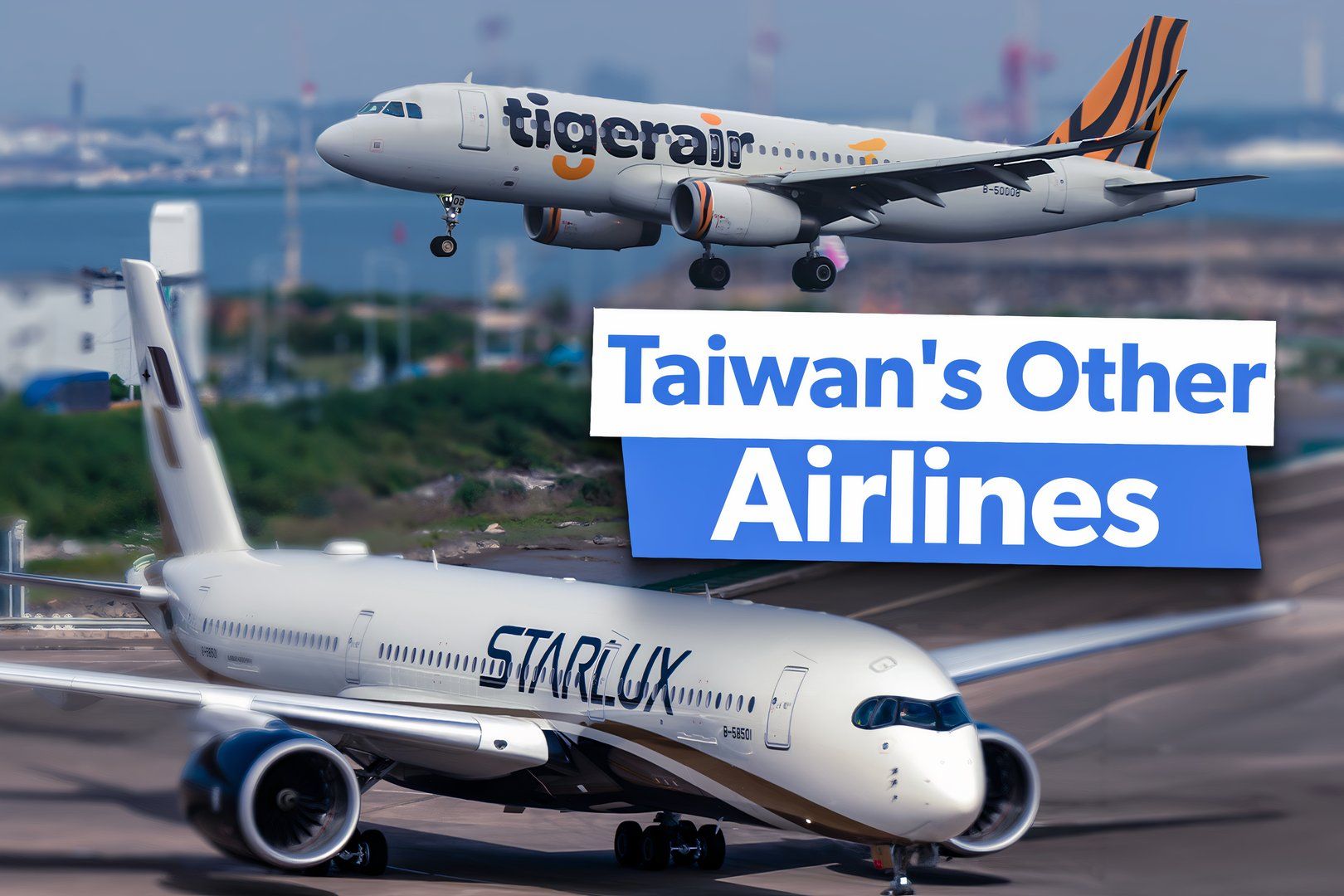
Related
Not Just EVA Air & China Airlines: 5 Other Taiwanese Carriers You Might Not Have Heard Of
Taiwan has an extensive domestic and regional network thanks to several smaller airlines.
Other 747-400 hull losses
According to ATDB.aero’s database, 12 Boeing 747-400s were declared hull losses. Seven of these planes were 747 400s, and five 747-400Fs were employed for freighter operations. After the China Airlines accident in 1993, the next accident occurred in 1998, involving a Korean Air 747-400, which was destroyed at Gimpo International Airport in Seoul, South Korea. In 2000, a Singapore Airlines 747-400 was destroyed at Taipei.
Photo: kamilpetran | Shutterstock
Then, in 2008, an All Nippon Airways aircraft was destroyed at Don Mueang International Airport in Bangkok, Thailand. In 2009, an Air India 747-400 was destroyed in Mumbai, and the hull was auctioned two years later. Finally, in 2013, two British Airways 747-400s were declared hull losses, one in 2015 and one in 2020. None of these accidents were fatal, but the planes were written off due to damage beyond repair.
What are your thoughts on the hull loss of a brand-new 747? Tell us in the comments section.

